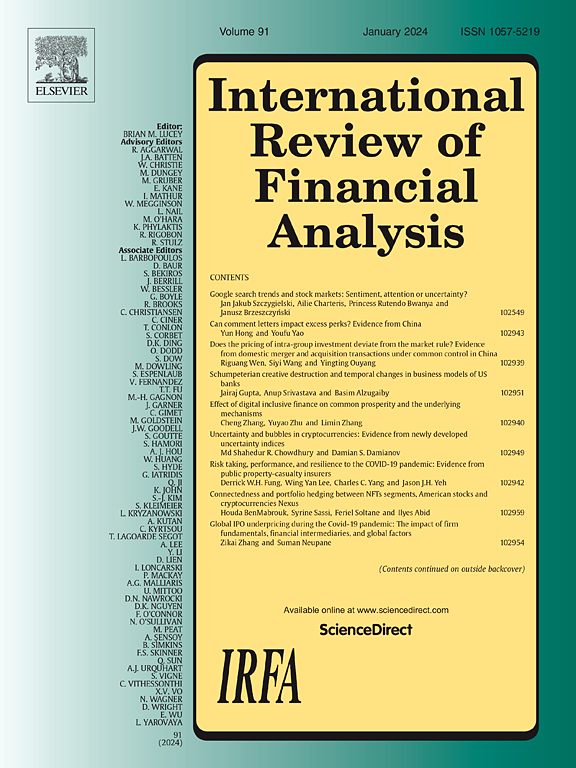Forecasting climate-sensitive industries' volatility: A regime-switching GARCH-MIDAS approach with multiple climate risk indicators
IF 7.5
1区 经济学
Q1 BUSINESS, FINANCE
引用次数: 0
Abstract
This study investigates the predictive power of multiple climate-related indicators in forecasting volatility across climate-sensitive industries using a regime-switching generalized autoregressive conditional heteroskedasticity mixed-data sampling (GARCH–MIDAS) model. We examine environmental, social, and governance (ESG) metrics, climate policy uncertainty (CPU), the Transition Risk Index (TRI), the Physical Risk Index (PRI), and economic policy uncertainty (EPU) to predict stock return volatility. Our analysis covers major indices including renewable energy, transportation, mining, aggregate energy, and the green economy across Asia, Europe, and the United States. Empirically, out-of-sample results reveal that the ESG and CPU indices are superior predictors of volatility for renewable energy, clean energy, and green economy indices, particularly in Asian and U.S. markets. PRI and EPU indicators demonstrate significant predictive power for volatility in the energy, mining, and transportation sectors. Incorporating uncertainty factors into the Markov regime-switching GARCH–MIDAS framework substantially improves forecast accuracy, as supported by both economic and statistical metrics. These improvements are validated through R2 direction of change and model confidence set tests. The findings carry important implications for climate policy development and implementation, offering critical insights for policymakers, investors, and industry stakeholders navigating the complexities of climate-sensitive sectors.
预测气候敏感行业的波动性:基于多气候风险指标的GARCH-MIDAS方法
本研究利用一种状态切换广义自回归条件异方差混合数据抽样(GARCH-MIDAS)模型,研究了多个气候相关指标在预测气候敏感行业波动率方面的预测能力。我们考察了环境、社会和治理(ESG)指标、气候政策不确定性(CPU)、转型风险指数(TRI)、物理风险指数(PRI)和经济政策不确定性(EPU)来预测股票收益波动。我们的分析涵盖了亚洲、欧洲和美国的主要指数,包括可再生能源、交通运输、矿业、总能源和绿色经济。实证结果表明,ESG和CPU指数是预测可再生能源、清洁能源和绿色经济指数波动的最佳指标,尤其是在亚洲和美国市场。PRI和EPU指标对能源、采矿和运输行业的波动性具有显著的预测能力。在经济和统计指标的支持下,将不确定性因素纳入马尔可夫政权转换GARCH-MIDAS框架大大提高了预测的准确性。通过R2变化方向和模型置信集检验验证了这些改进。研究结果对气候政策的制定和实施具有重要意义,为决策者、投资者和行业利益相关者应对气候敏感行业的复杂性提供了重要见解。
本文章由计算机程序翻译,如有差异,请以英文原文为准。
求助全文
约1分钟内获得全文
求助全文
来源期刊

International Review of Financial Analysis
BUSINESS, FINANCE-
CiteScore
10.30
自引率
9.80%
发文量
366
期刊介绍:
The International Review of Financial Analysis (IRFA) is an impartial refereed journal designed to serve as a platform for high-quality financial research. It welcomes a diverse range of financial research topics and maintains an unbiased selection process. While not limited to U.S.-centric subjects, IRFA, as its title suggests, is open to valuable research contributions from around the world.
 求助内容:
求助内容: 应助结果提醒方式:
应助结果提醒方式:


